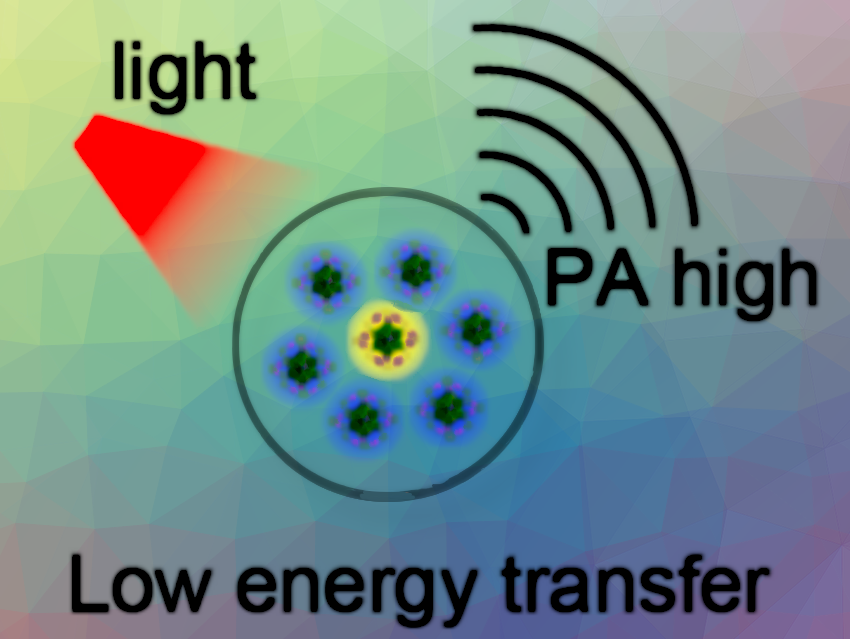Atomically precise metal nanoclusters (MNCs) possess great potential in biology and medicine due to their uniform, sub-nanometer size, strong stability, good biocompatibility, and metabolizability. The photoacoustic (PA) properties of MNCs have interested researchers for years, particularly in the context of PA imaging contrast agents. Yet, the broad use of MNCs has been limited by their low PA conversion efficiency (PACE).
Jianping Xie, National University of Singapore, and Jishi Chen and Zonghua Wang, Qingdao University, Qingdao, China, and colleagues have found that the weakly polar solvent ethanol can cause water-soluble metal cluster to aggregate in aqueous solutions. The team used the precisely structured spherical Au25SR18 (SR is thiolate), which has an Au13 icosahedral core that is capped with six Au2SR3 staple motifs, as a representative model of nanoclusters.
This aggregation phenomenon leads to an enhancement in photoacoustic (PA) intensity and conversion efficiency (PACE). Notably, the degree of aggregation significantly influences both PA intensity and PACE, and, intriguingly, the increase in aggregation-driven PA intensity (AEPA) positively correlates to the protective ligands.
The researchers have observed that the AEPA phenomenon indicates that the aggregation accelerates the intramolecular motion of Au NCs, resulting in a larger proportion of energy dissipated through vibrational relaxation. This finding contrasts with the typical understanding of aggregation-induced emission, where intramolecular motion is restricted.
The research also found that the increased energy of AEPA comes from how aggregation stops energy from moving between the excited Au nanoclusters and the molecules around them, like the solvent molecules and oxygen dissolved in it. This is different from merely limiting radiation relaxation.
According to the research team, this study introduces a new strategy to enhancing the PA intensity of MNCs. Additionally, it deepens our comprehension of the origins of PA signals and the process of dissipating energy from excited states within MNCs.
- Ligand-dependent aggregation-enhanced photoacoustic of atomically precise metal nanocluster,
Changlin Zhou, Meng Wang, Qiaofeng Yao, Yu Zhou, Chuantao Hou, Jianfei Xia, Zonghua Wang, Jishi Chen, Jianping Xie,
Aggregate 2023.
https://doi.org/10.1002/agt2.401



![Synthesis of [c2]Daisy Chains via Mechanochemistry](https://www.chemistryviews.org/wp-content/uploads/2025/04/202504_RotaxanesWithSolidStateMechanochemistry-125x94.png)
